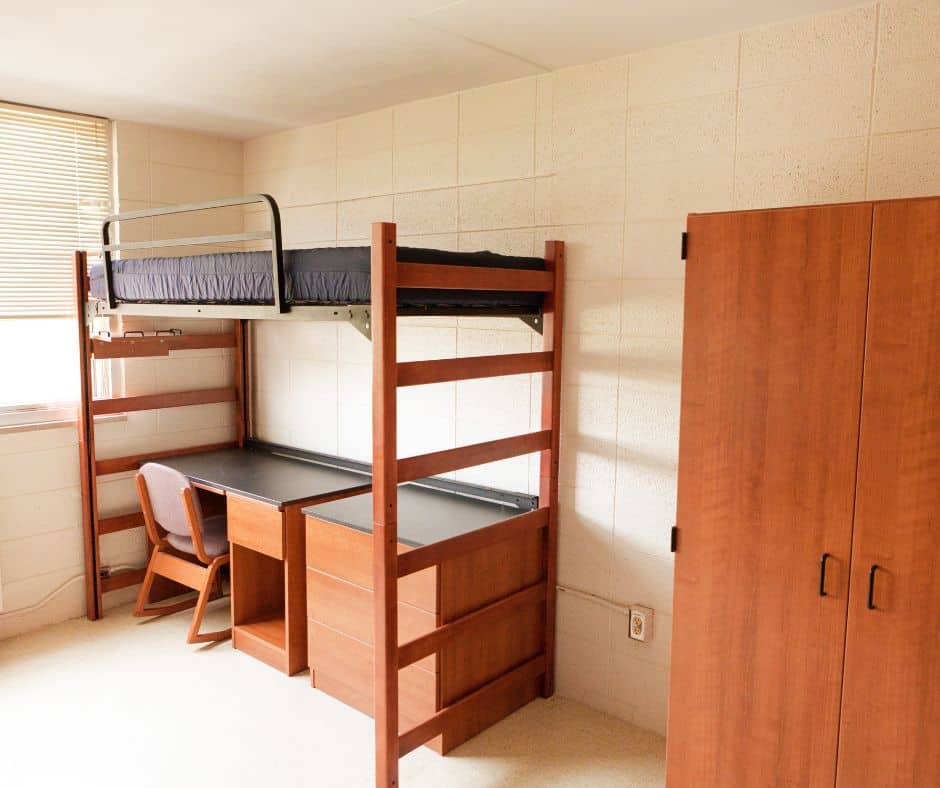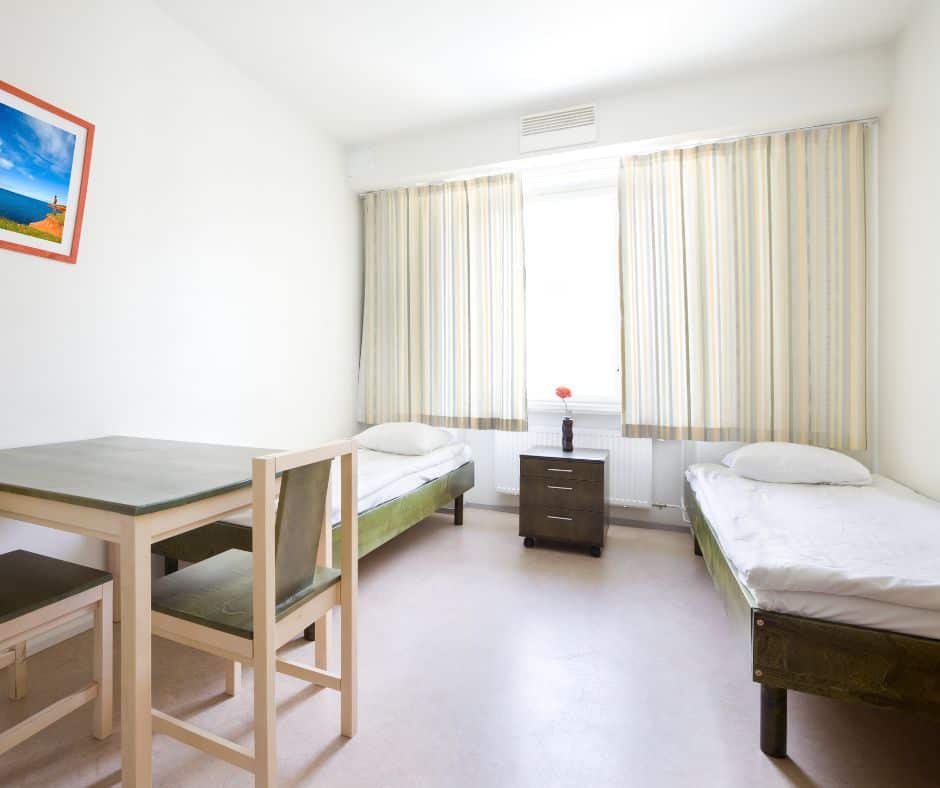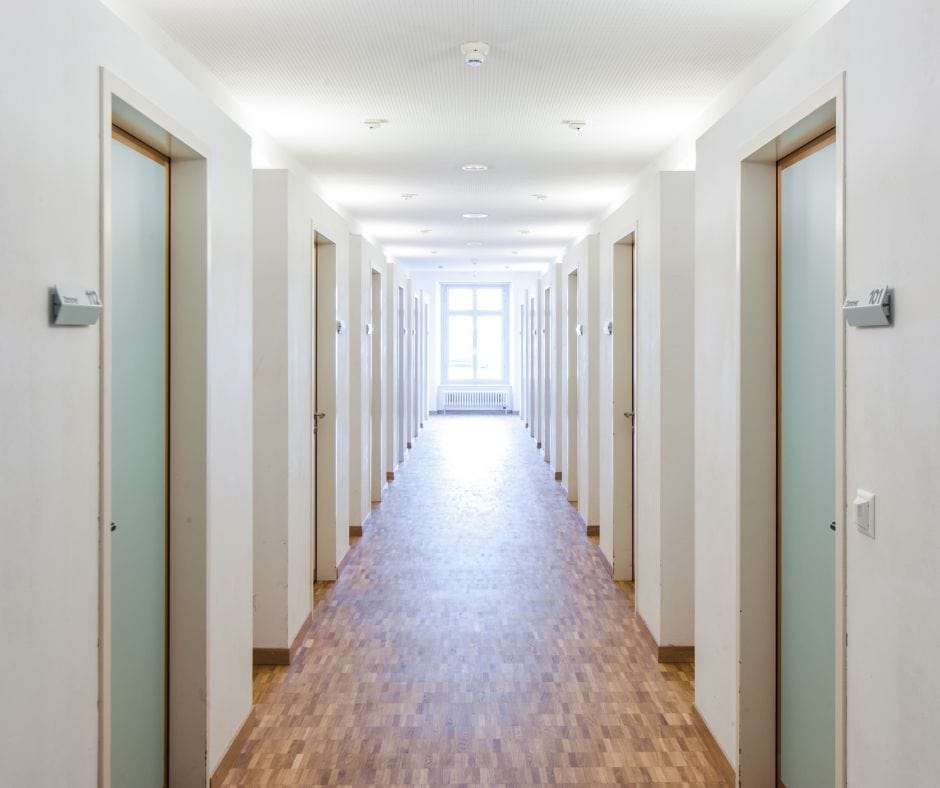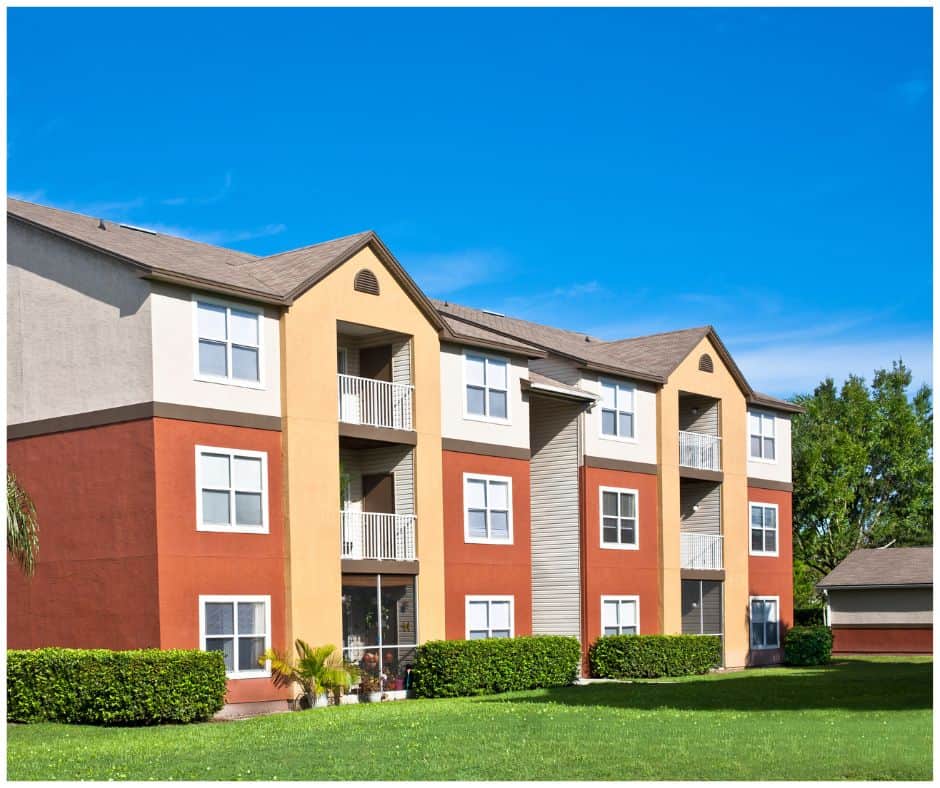Updated on June 14th, 2024
As the academic year begins, a new batch of high school seniors typically set their sights on college. They start reviewing options, identifying college costs, and preparing their applications for admission (if they haven’t done so already).
When reviewing costs at each school, room and board is a standard line item on the list, especially for students who plan to go to college away from home.
But what is room and board exactly, and how much will it cost?
If you and your student are unfamiliar with the term, here’s everything you need to know.
- What is Room and Board?
- How Much Does Room and Board Cost?
- Is Room and Board Cost Effective?
- How to Make Room and Board More Affordable
- How to Pay for Room and Board
If you and your student would like to learn precisely where to find scholarships that can help handle tuition and cover room and board costs and the steps needed to help secure them, check out our free scholarship training webinar: 6 Steps to Quickly Security Scholarships for College.
What is Room and Board?
Many students (and parents) wonder, “What does room and board include?” Well, in the simplest sense, room and board is a roof over your student’s head and food in their belly.
If you prefer the dictionary definition, the answer to “what is room and board” is “lodging and food usually furnished for a set price or as part of wages.”
What Does “Room” Include?
The “room” portion of the room and board definition usually relates to their housing, such as a college dorm room in a residence hall or a school-run off-campus apartment. It is where they will sleep, study, stream Netflix, and hang out with friends.
Generally, a few key things are part of the equation. Along with the physical space, utilities are usually included. Similarly, internet is often part of the package, either through hard-lined connections or in-building Wi-Fi.
Some private and public colleges make living on campus mandatory for students, especially if they aren’t local. This makes it easier for them to adapt to college life and makes sure they live near their school, eliminating problems like transportation issues that could hinder their ability to attend classes.
However, just because the word “room” is used to describe the student’s living arrangement, that doesn’t mean they get an entirely private space. Shared dorm rooms are still part of the whole college room and board equation.
On a good note, basic furniture is usually provided, though precisely what your student will have access to varies depending on their dorm room assignment and even the school they attend. Additionally, dorm facilities typically have a range of amenities, such as shared laundry rooms, lounges, and space for study groups to meet.
What Does “Board” Include?
Now that the “room” portion of the “what is room and board” question is covered, it’s time to address the “board” part.
In most cases, “board” stands for your student’s meal plan. Many schools offer a few options. Most commonly, this ranges from a set number of meals per day to unlimited access to the college’s dining hall. However, some colleges may have a credit-based plan, which works similarly to a prepaid card that students can use in specific dining facilities.
More often than not, the food and beverages are provided through cafeterias or similar dining facilities. This means your student doesn’t always have much control regarding what is available to eat or drink, but they are guaranteed to have access to food based on their chosen meal plan.
However, most colleges offer a range of meal and drink options on any given day. Plus, many are respectful of potential dietary restrictions, providing at least one entrée that can suit various needs or preferences at each meal. For example, it’s not uncommon to find vegan, kosher, or gluten-free dishes.
Typically, a meal plan is a matter of convenience. If your student is hungry, meal plans allow them to head down and get what they need to eat without an additional cost.
Some colleges do require that incoming freshmen sign up for a meal plan if they also make living in a dorm room mandatory, so it’s essential to keep that in mind.
Related articles:
- How to Save Thousands on Student Housing Costs
- Dorm Room Checklist & How to Set Up on a Budget
- 75 Easy Ways to Save Money in College
How Much Does Room and Board Cost?
Now that you have an answer to the “what is room and board” question, it’s time to move on to the next part of the equation – the cost.
The total cost of room and board varies by school. However, if your student is heading away to college, it’s critical to understand that it is usually substantial.
On average, during the 2023-2024 school year, students spent between $9,970 and $14,650 on room and board (or housing and food) while in college. At four-year public colleges, students paid an average of $12,770. At private nonprofit four-year colleges and universities, the average sat at the top of the range, hitting $14,650.
That means, for in-state students at public four-year schools, the average cost of room and board actually exceeds the average price of tuition, which was listed at $11,260.
However, some schools charge notably more than the average amount for room and board. For example, the University of California–Berkeley charges about $21,508 for room and board.
On the other end, Northwestern Oklahoma State University charges $5,700 for a semi-private room and 12 meals per week.
Often, the actual cost of room and board is somewhat variable. If a school offers multiple meal plan options, then your student may pay more or less than those estimates.
Is Room and Board Cost-Effective?
Whether paying for room and board is more cost-effective than living off-campus depends on a few factors. First, the area’s cost of living plays a big role, particularly when it comes to rental prices near your student’s college, as well as food costs. In some cases, students living off-campus may be more affordable, especially if your student splits these and other expenses up with roommates.
Second, it’s important to consider the convenience of these arrangements. Even if your student is paying more by living and eating with on-campus housing, certain hassles are automatically eliminated. For example, they don’t have to pay separate utility bills like electricity, water, garbage, and even internet, as they are included in most dorm rooms and on-campus apartments.
Additionally, if their meal plan provides them with enough meals every day, they don’t have to go to the grocery store or even cook, which can be a big timesaver. Plus, they don’t have to transport themselves to and from campus to meet their basic needs.
Finally, depending on the school, paying for room and board might not be optional. If your student is required to live on-campus, then it’s simply an expense they will have to shoulder.
How to Make Room and Board More Affordable
Now that the question, “What is room and board and what will it cost?” is addressed, it’s important to understand that there are ways to make it more affordable.
For example, your student can save money on room and even board fees by selecting lower-cost dorm rooms. A private room always costs more than a shared space, so dealing with a roommate can help them save.
Colleges also typically charge more for newer dorms, so while they may not be as updated, choosing an older dorm can save thousands of dollars in the end. And actually, those crazy dorm stories from the “old dorms” usually build camaraderie among new college students. 😉
Similarly, opting for a meal plan that covers their needs, but maybe not their wants, can also help to lower the total amount spent. For example, choosing a set number of meals instead of an unlimited plan might lead to substantial savings. This is particularly true if students are strategic about the meals they cover themselves.
Often, there are low-cost breakfast options at grocery stores, many of which are ready-to-eat. Since having a mini-fridge and microwave in a dorm room is typically allowed, that even gives students more breakfast options they can make themselves. So, for students looking to cut costs, that could make a more limited meal plan manageable.
How to Pay for Room and Board
When staying on campus, the cost of room and board is included in the total bill through the university (compared to paying rent separately if living in off-campus housing). Typically, this means any overage money or loan money remaining after tuition and fees will be applied to the room and board balance.
It is also possible to cover these costs without student loans.
Of course, many families choose not to borrow for the cost of living expenses like room and board but instead try to use cash to pay for this part of the college experience. With flexible part-time jobs, students can help contribute to the cost of college themselves.
Even better, students can search for scholarship money to help cover the bill. Many scholarships allow students to direct their awards to handle a variety of school expenses, room and board included. This means your student might not have to come out of pocket to keep a roof over their head, the power on, and food in the belly.
I personally received enough scholarship money to cover not only college tuition costs, fees, and books but also my room and board (plus an overage check for extra expenses). So it is possible!
If you and your student would like to learn precisely where to find scholarships and what steps are needed to help them secure them, check out our free scholarship training webinar: 6 Steps to Quickly Security Scholarships for College
By landing scholarships and financial aid, your student can cover their room and board costs, ensuring they have everything they need to succeed in college.
What Are the Benefits of Living on Campus?
Living on campus comes with a plethora of benefits that can significantly enhance your college experience. One major advantage is the convenience; you’re just a short jaunt from your classes, libraries, and campus events. This proximity makes it easier to engage in extracurricular activities, join study groups, and participate in campus life.
Another benefit is the sense of community. Living on campus allows you to meet new people and build lasting friendships. You’ll be surrounded by fellow students who are going through similar experiences, creating a supportive and social environment. Plus, resident advisors (RAs) are there to help you navigate college life, offering guidance, organizing activities, and providing support whenever you need it.
Security and amenities are also significant perks of on-campus living. Most campus housing includes essential services like internet, laundry facilities, and 24/7 security, ensuring you have a safe and comfortable living environment. Additionally, many campuses offer meal plans, making dining convenient and hassle-free.
Finally, living on campus can foster personal growth and independence. You’ll learn valuable life skills, such as managing your time, budgeting, and balancing academic and social responsibilities. Overall, on-campus living provides a well-rounded and enriching college experience, setting the stage for academic success and personal development.
What Are the Disadvantages of Living on Campus?
While living on campus has many benefits, there are a few disadvantages to consider. One of the main drawbacks is the cost. On-campus housing can sometimes be more expensive than off-campus alternatives, especially if you find a place to share with roommates. Additionally, meal plans, although convenient, can add to the overall expense.
Privacy is another concern. Dorm life often means sharing your space with a roommate and having less personal space compared to living off-campus. The communal living setup can lead to noise and distractions, which might make it harder to find quiet time for studying or relaxing.
There’s also the issue of limited control over your living environment. On-campus housing often comes with rules and regulations that might restrict certain activities, such as cooking in your room, having guests, or decorating your space. These rules are designed to ensure a safe and comfortable living environment for everyone, but they can sometimes feel restrictive.
Finally, while the close-knit community of campus life can be a benefit, it can also lead to a sense of being in a bubble. You might find yourself mainly interacting with other students and missing out on the broader experiences of living in a diverse community outside the campus.
Overall, while living on campus can provide convenience and a sense of community, it’s essential to weigh these factors against potential downsides like cost, privacy, and lifestyle restrictions.
FAQs
Are Room and Board Qualified Education Expenses?
When most students and parents think about qualified education expenses, they want to know about tax deductions. When it comes to room and board expenses, the IRS has specific guidelines about what qualifies as a “qualified education expense.” Generally, tuition and fees required for enrollment are considered qualified expenses. However, room and board aren’t in that category.
Do Resident Advisors Get Free Room and Board?
Yes, resident advisors (RAs) can receive free housing – and potentially a free meal plan – as part of their compensation package. Serving as an RA comes with a variety of responsibilities, such as assisting residents, organizing events, and ensuring a positive living environment. In return for their hard work, many colleges and universities offer RAs the benefit of free or significantly discounted housing and meal plans.
However, this isn’t a universally-provided perk. Additionally, securing a spot as an RA isn’t always easy, as some competition is typical. Finally, being an RA isn’t an option for first-year students, so while this is a solid option for students well into their college journey, it won’t work for freshmen.
Do I Have to Pay for Room and Board If I Live at Home?
For students who choose a college near their parent’s home, paying for room and board is potentially unnecessary. Instead, they can remain in their family’s house, eliminating the need for a dorm room or a reliable source of meals.
However, some colleges and universities have on-campus living requirements for all students, regardless of whether they’re local. At those schools, paying for a dorm room – and potentially a meal plan – isn’t an option. As a result, students need to review the requirements at their chosen college, even if they live nearby, to see whether covering the cost of room and board is a mandatory part of the equation.
When Can I Find Information About the Cost of Room and Board at a Specific College?
Fortunately, colleges publish specific information about the room and board costs students may need to pay. Generally, it’s listed on the school’s website, typically on the cost of attendance page or similar pages dedicated to tuition and other college costs.
If students have trouble finding that information, they can reach out to the admissions office for details. Otherwise, doing a web search for “[school name] room and board costs” or “[school name] cost of attendance” typically does the trick.
Does the Cost of Room and Board Go Up Every Year?
Just like the cost of tuition can increase over time, so can the cost of room and board. Colleges reassess how much they charge regularly, though they typically only make changes between academic years.
How much the cost goes up can vary from one school to the next. As a result, it’s wise for students to track the cost of attendance at their school, allowing them to learn about any increases as far in advance as possible.
If you and your student would like to learn precisely where to find scholarships that can help handle tuition and cover room and board costs and the steps needed to help secure them, check out our free scholarship training webinar: 6 Steps to Quickly Security Scholarships for College.











Nice post!
I appreciate how you systematically addressed each one of the various considerations parents and students might have when trying to make wise decisions about room and board. Living on campus can be expensive, but it prevents other potential hassles such as utilities, internet and transportation issues.
We will be going into our 4th yr in college and everything discussed above is right on the money…
This is a great post. However, families need to be aware that scholarships over and above tuition, fees and books are taxed at the parents’ tax rate. It was a nasty surprise for us and I want to spread the word so other parents are not surprised like we were.